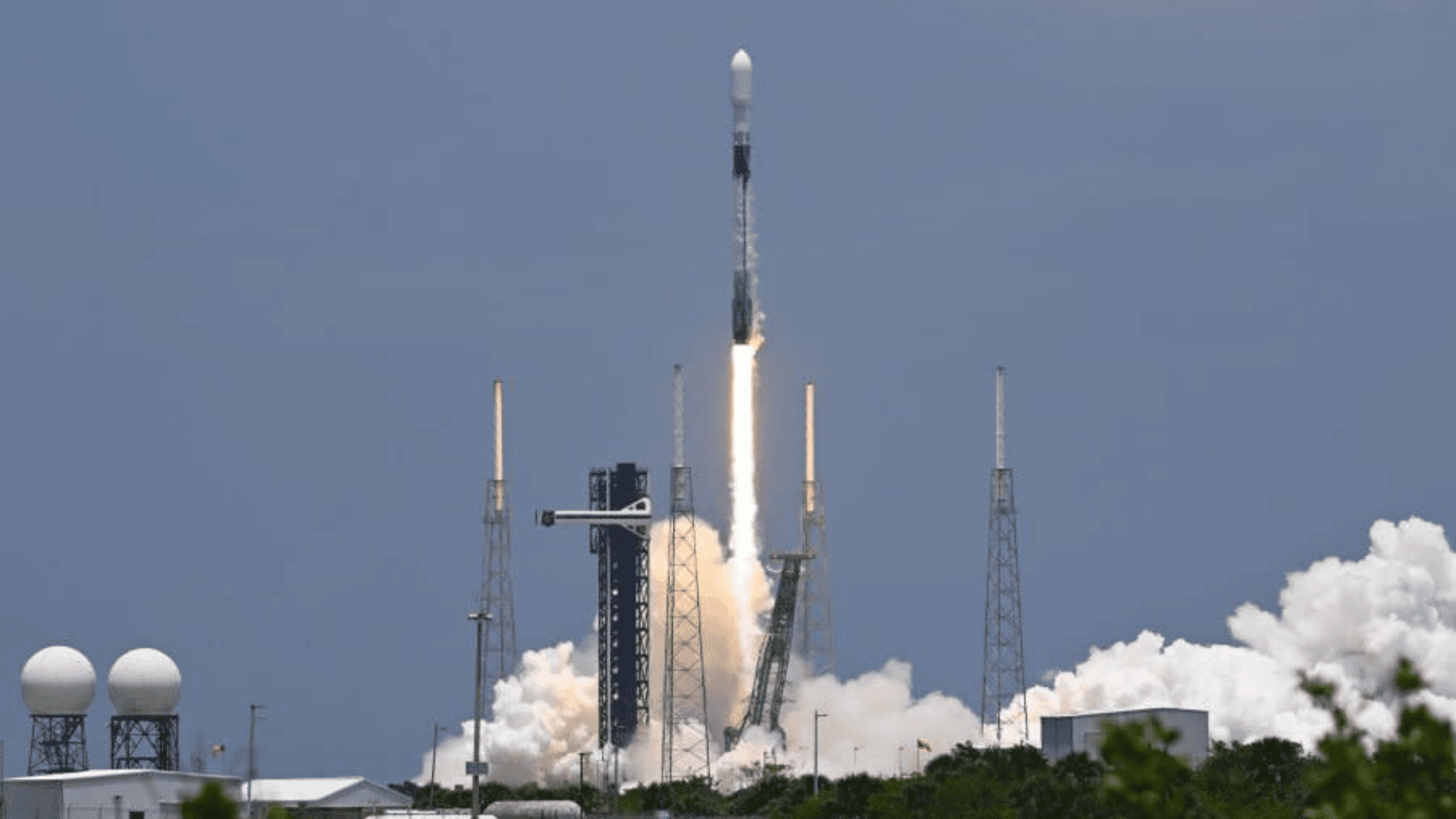SpaceX just launched 23 Starlink satellites from Cape Canaveral on Tuesday at 9:05 AM. Of the 23 satellites, 13 have direct-to-cell capabilities.
SpaceX Latest Missions

The Starlink 12-24 mission didn’t cause any Space Coast sonic booms as it traveled southeast and landed on the SpaceX drone ship at 9:14 AM. The rocket’s upper stage continued carrying the 26 Starlink satellites to low Earth orbit, deploying them approximately one hour after liftoff. The spacecraft will now move to join the megaconstellation, the biggest satellite network ever assembled.
This mission marks SpaceX’s 70th Falcon 9 launch of 2025. Fifty-two of those flights have been dedicated to building the Starlink megaconstellation in low Earth orbit. According to the SpaceX mission description, this was also the seventh launch and landing for this particular booster.
SpaceX has been responsible for 47 of the 49 launches from the Space Coast in 2025. The 50th was originally planned for Wednesday morning with the crewed launch of Axiom Space Mission 4 flying in the new Crew Dragon capsule. Though this mission was originally planned for Tuesday morning as well, researchers were speculating on whether the poor weather conditions would allow for the flight.
Rather than weather conditions, however, the Wednesday launch was delayed due to a liquid oxygen leak discovered on the Falcon 9 rocket. According to NASA, a new launch date for this mission will be announced once repair work is complete, pending range availability.
Once ready, the Axiom Space Mission 4 will take off from KSC’s Launch Pad 39-A and will be the second flight to use first-stage boosters. Since it will return to Canaveral’s landing Zone 1, you could hear a sonic boom on the Space Coast and parts of Central Florida.
The astronaut crew of Axiom Space Mission 4 (Ax-4) will be heading toward the International Space Station. This mission, commanded by former NASA astronaut Peggy Whitson, will be the fourth crew mission flying for a private company.


